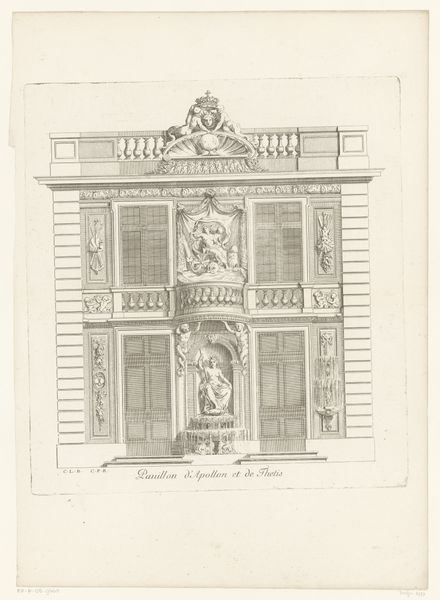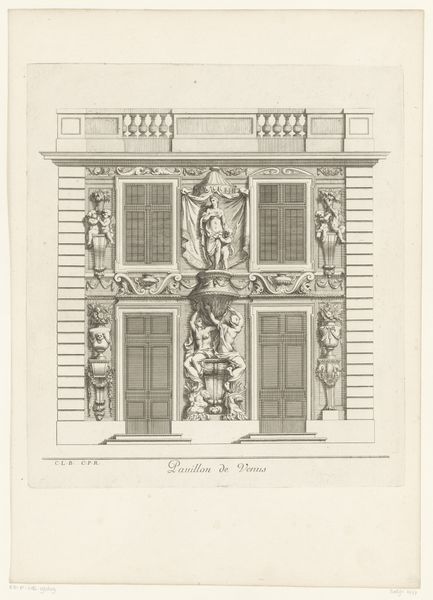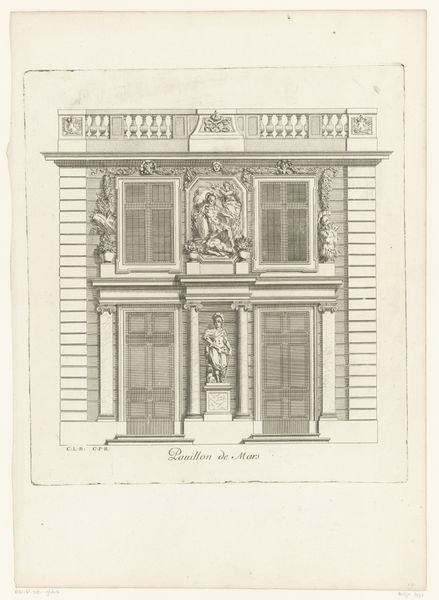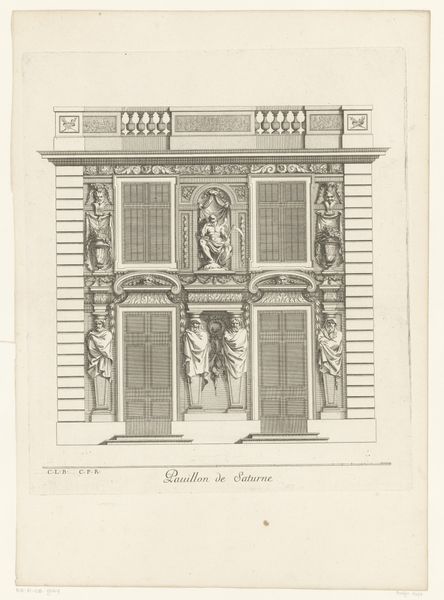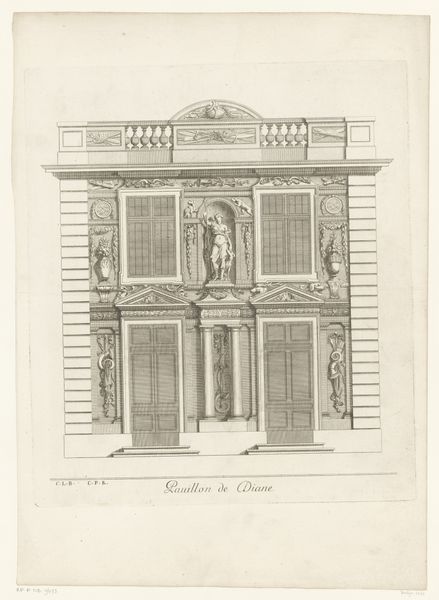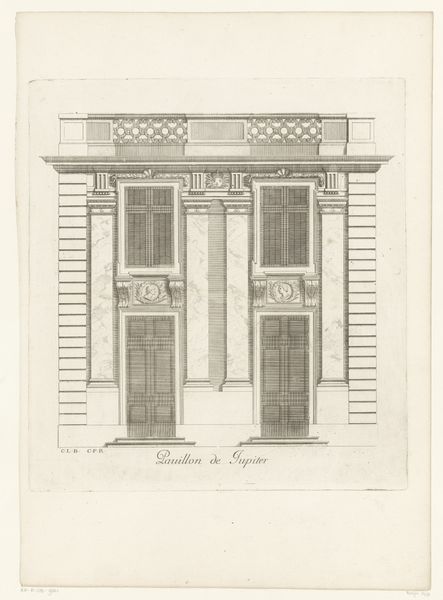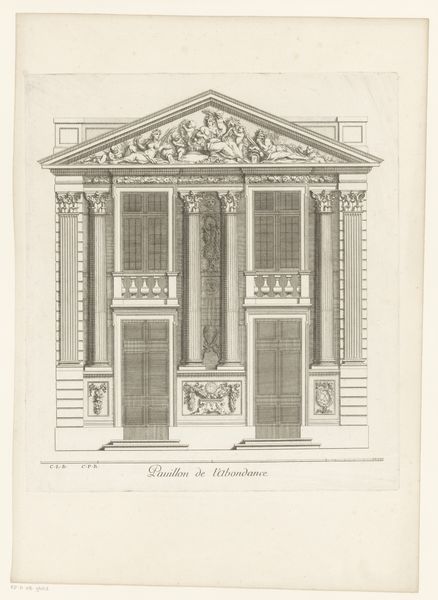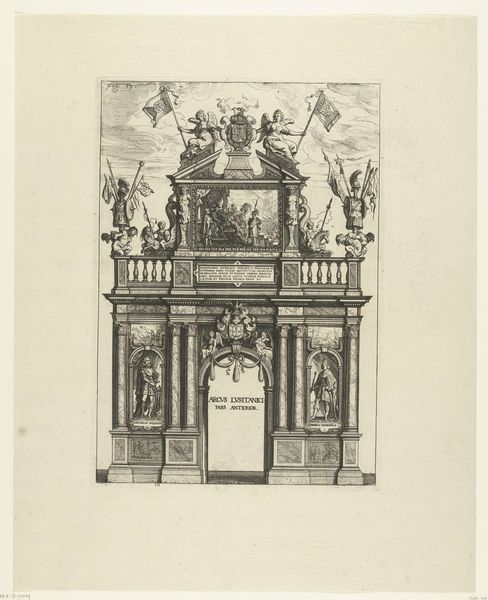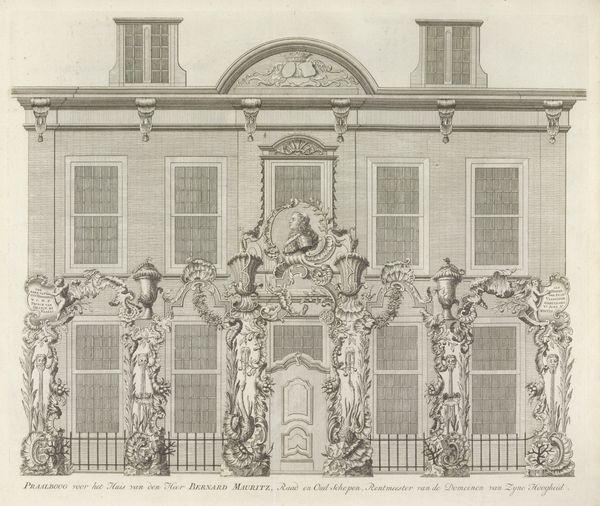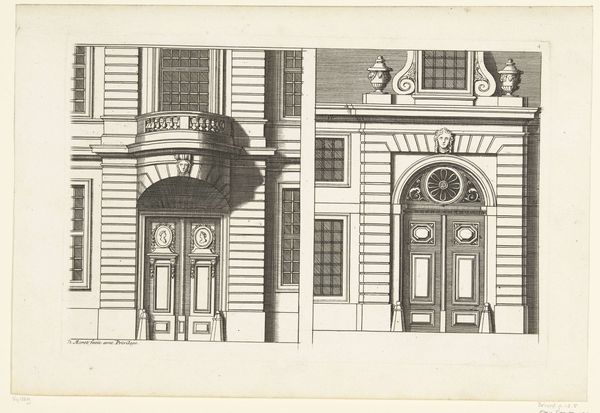
drawing, etching, engraving, architecture
#
drawing
#
baroque
#
etching
#
etching
#
cityscape
#
history-painting
#
engraving
#
architecture
#
building
Dimensions: height 377 mm, width 344 mm
Copyright: Rijks Museum: Open Domain
Curator: Here we have Louis de Châtillon’s "Paviljoen van Victoria," dating from 1672 to 1686. This rendering, a detailed drawing using etching and engraving techniques, offers a glimpse into Baroque architectural design. What springs to mind as you take it in? Editor: It's so precise! Feels like a stage set for a play about gods and grand entrances, maybe a bit intimidating. The symmetry is almost too perfect, don't you think? Curator: Indeed. The symmetry here operates as a central element. The calculated mirroring effect enhances the architectural form and imbues it with a sense of authority. Observe how the verticality created through evenly placed windows, doors, and sculptural decorations draws the eye upward, culminating in the crested rooftop. Editor: Right, and all the sculptures – goddesses, maybe? - feel like they're judging you! The lighting, or rather, the lack of shadow, makes it almost flat. Where's the drama? Is it trying to convey triumph, or is it just… showing off? Curator: The etching technique here serves less to evoke specific shadows than to depict volume through minute, calibrated lines, creating form within this representation of triumphal architecture. Semiotically, consider how this calculated portrayal interacts with the theme. Is this pavilion purely a celebration, or might it communicate more intricate associations relating to power? Editor: Power for sure! It's all about announcing "We have arrived," isn’t it? Like the Sun King himself might stroll out any minute! But in a drawing... is it a dream, or a blueprint? It is almost hyperreal; it makes me want to mess it up a little, plant a few rogue flowers. Curator: An interesting counterpoint. The architecture, however, demonstrates a clear structure indicative of theoretical application and purposeful communication of ideas. Its enduring existence here at the Rijksmuseum furnishes critical data to those deciphering complex frameworks, for it showcases architectural ambition transcribed in meticulous detail. Editor: True, and it reminds me that even back then, someone was drafting with such precision—attempting to control how the world *should* be, and not how it necessarily *is*. A solid reminder to maybe, mess things up, in life AND in art, once in a while. Curator: A fine reflection; indeed, it shows how visual analysis of even seemingly immutable forms, such as Baroque architecture, can incite varied perceptions.
Comments
No comments
Be the first to comment and join the conversation on the ultimate creative platform.

